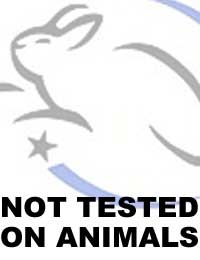Understanding Cruelty Free Labelling

Many people make the mistake of relying on a quick glance at the label when searching for cruelty-free products. Although the move toward labelling is a positive step, labels can also be misleading.
Sadly, in many cases, the use of cruelty-free labelling is more of a marketing ploy than an assurance of non-exploitation. Not all companies choose to label, even when their products and ingredients are cruelty-free. The following article will tell you what it is possible to learn from the labels and discuss strategies for supporting cruelty-free products and manufacturers.
What the Label Says...
When a product is labelled "cruelty-free" or "not tested on animals," you may not really know much more than you did before reading the label. Governments have provided little guidance for labelling in terms of definitions or standards. In fact, manufacturers are often given the responsibility themselves for defining the meaning of their labels. One frequent area of misunderstanding is whether the label refers to the finished product or to each individual ingredient. While it is possible for finished products to be cruelty-free, it is rare to find a case where each individual ingredient has been tested without using animals.Pay Attention!
The companies involved in labelling understand how the mind of the consumer works. They recognise that many individuals throughout Europe abhor the idea of animal testing. It makes sense that firms want to present their products as completely in harmony with consumer sentiment.Therefore, they are often willing partners in promoting misunderstanding or misdirection. At present, since cruelty-free labelling is not mandated (it is left for the company to choose), manufacturers may choose to skip labelling altogether. Or they may opt for words like "natural" or "organic." These are certainly excellent qualities in a product, but they have absolutely nothing to do with whether or not a product was tested using animals.
Another phrase that may crop up from time to time is "dermatologically tested." Does this mean it wasn't tested on animals? Not necessarily. Although many observers accept this as a description of testing on human volunteers, technically the phrase means "tested on skin." So theoretically there's no real assurance that animals weren't involved in the development of the project.
What You Can Do as a Consumer
One option you have as a consumer is to review lists of cruelty-free manufacturers. Several websites maintain a database of companies who have committed to following cruelty-free testing methods. You can spend some time reviewing the firms listed. Then when you go shopping, if you see products made by companies on the list, there is really no need to search for a label. You know ahead of time which companies to seek out and which to avoid.Now that you understand the confusion surrounding cruelty-free labelling, you may be better equipped than the average consumer of cosmetics or household products. At best, current cruelty-free labelling is inconsistent. At worst, it is just plain misleading. In the end, companies probably view labels as a marketing strategy rather than a statement of fact. And when companies don't label, then you really don't know what's going on. Your best bet at this point is to develop a personal list of companies that have committed to a no-animal-testing policy. Then when you're at the market, you can pull the appropriate products without a lot of laborious label reading.
- What is Tofu and How Can I Use It?
- The EU Ban on Animal Testing for Cosmetics
- Animal Free Confectionary
- Is Soy Milk Good for Me?
- Different Types of Vegetarianism
- Animal Free Treats
- How To Find And Use Animal Testing Free Baby Products
- Animal Free Children are 'Normal' Children
- Raising Healthy Animal Free Kids
- Should you Keep your Child Animal Free?
- Babies and Cows Milk


Re: Problems with Leather
Love to know where to buy these products. I am in Australia, South Australia.
Re: Understanding Cruelty Free Labelling
So the animal crulty Imagine you were the animal suffering They don’t deserve it Nor do humans Also stop palm oil
Re: How To Identify Animal Free Cosmetics
A friend has alleged "that most shampoos contain pig lard" sic. I cannot believe it, but is it true?
Re: Understanding Cruelty Free Labelling
Leen - Your Question:Equate (Walmart brand) has the words in Vitro testing on the box. Does this definitely mean it was…
Re: Understanding Cruelty Free Labelling
Equate (Walmart brand) has the words in Vitro testing on the box. Does this definitely mean it was not tested on animals?
Re: How To Identify Animal Free Cosmetics
Umme usman - Your Question:Please, verify that does any animal derived ingredient is present in diana of london…
Re: How To Identify Animal Free Cosmetics
Please, verify that is there any animal derived ingredients present in diana of london lipsticks?
Re: How To Identify Animal Free Cosmetics
Please, verify that does any animal derived ingredient is present in diana of london lipsticks??
Re: How To Identify Animal Free Cosmetics
mann - Your Question:Can you please tell me how to identify the product.wich product is natural and wich one is made…
Re: How To Identify Animal Free Cosmetics
can you please tell me how to identify the product...wich product is natural and wich one is made from animals skin,…